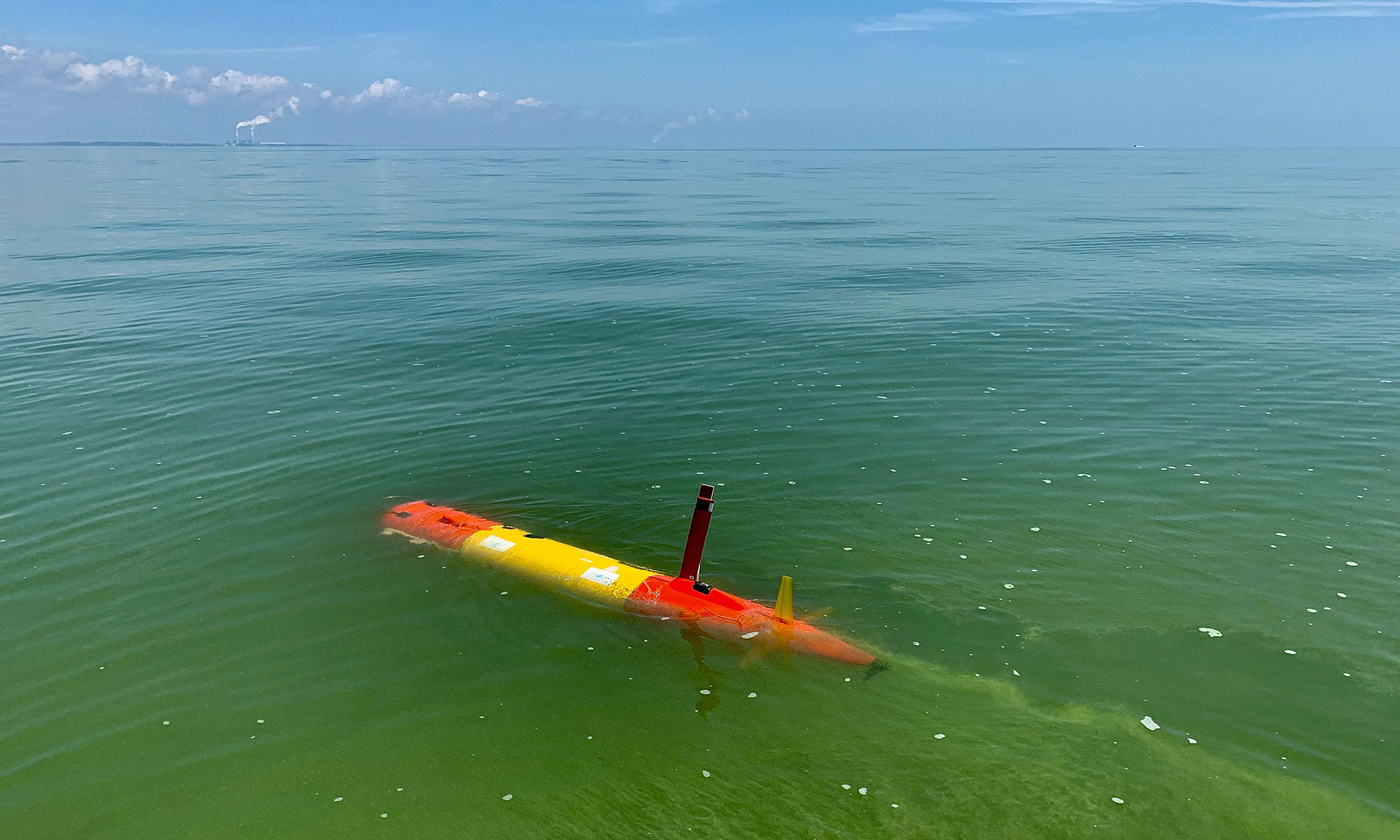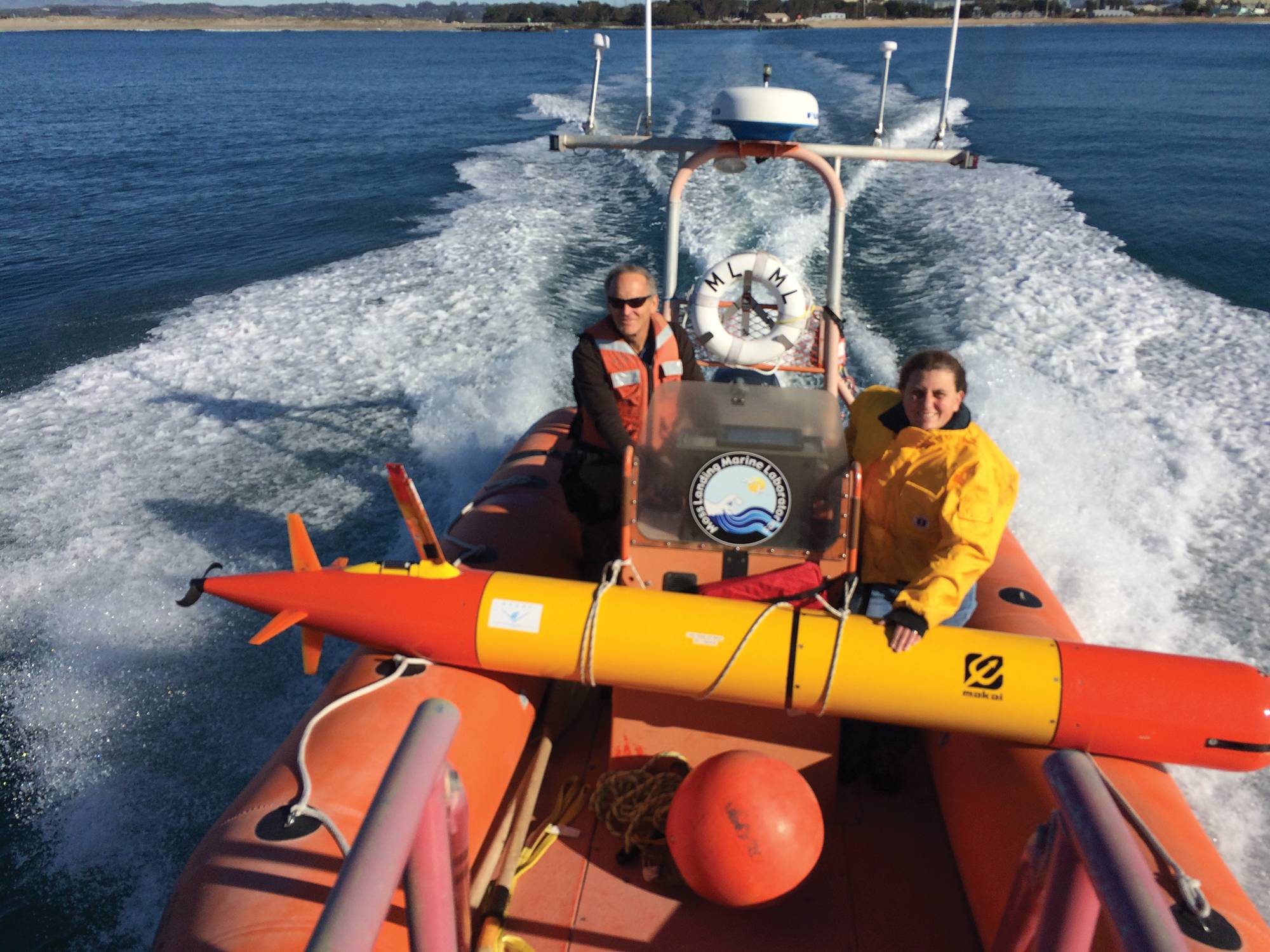The dynamic nature of the ocean, including its many chemical and biological processes, makes it challenging to monitor microscopic, marine algae in real time, but NCCOS-funded scientists have shown it can be done.
A new publication describes how a group from the Monterey Bay Aquarium Research Institute (MBARI) designed an underwater glider that can independently find and follow patches of phytoplankton. The researchers developed a kind of olfactory-based search mechanism that allows a self-propelled, long-range autonomous underwater vehicle (LRAUV) to detect the phytoplankton’s chlorophyll and steer toward rising concentrations associated with algal blooms.

The LRAUV can also dive hundreds of feet deep, complementing aerial and satellite remote sensing systems limited to near-surface algal detection based on ocean color. The new algorithm for the LRAUV, validated through field trials in 2021, can even be adapted to locate and track other patchy features, such as oil spills.
High-capacity batteries allow the torpedo-shaped glider to travel hundreds of miles of ocean for weeks at a time, acquiring and analyzing water samples for algal toxins. Not all algal blooms produce toxins, but when they do, they can harm people, fisheries, and marine mammals. Data collected by the LRAUV can be transmitted in real time to scientists and coastal managers to inform decisions that protect human health and living marine resources.
The project was funded by the NCCOS Ecology and Oceanography of Harmful Algal Blooms (ECOHAB) Program.

